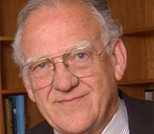US Economic Performance: A Midyear Assessment
Now, at 2019’s midpoint, is a good time to reassess the economic situation. I will start by looking back a ways, then at the present, and end with a brief forecast for the late-2019 economy.
Through most of 2012-2016, the U.S. economy generated GDP growth at a snail’s pace. It was a sleepy economy. Quarterly growth in real GDP exceeded the old long-term average of 3.0 percent just three times in 20 quarters. Indeed, by the time 2016 rolled around, real quarterly GDP growth was creeping along at less than 2.0 percent.
What had been just sleepy growth was beginning to look like a Rip Van Winkle economy that might just snore loudly for years. Every now and then, it would stir and open an eye, but the activity level left a lot to be desired.
Like most new presidencies, President Trump’s unexpected 2016 election brought blatant promises of better days. However, this time there was action that seemed to bring results. We had a new president who seemed dedicated to keeping some promises. With 2017 came meaningful corporate tax cuts, a dramatically lighter stance in issuing major regulations, sharp revisions in federally subsidized healthcare, and shock treatment to old trade agreements. A lot of fresh air entered the political sphere.
Consider the nearby chart, which shows year-over-year growth in real quarterly GDP for 2012’s first quarter through 2019’s first quarter, along with the quarterly average yield on two-year government notes. Notice that through 2018, GDP growth accelerated, and so did interest rates. The higher rates suggest that greater demand for investment funds for the growing economy signaled higher returns on invested capital.
By 2017, the pace had begun to quicken. 2018’s third quarter returned us to GDP growth that exceeded 3.0 percent. As the chart shows, the recovery path almost formed a straight line. From that standpoint, things seemed to be getting right again.
But not so fast. As in baseball, hits and home runs were accompanied by strikeouts and errors. We may see a warning hiding in the chart. Interest rates have fallen in the most recent period, and that is not necessarily a positive sign.
We get another take on the economy in the second chart. Using monthly data, this one shows year-over-year growth in industrial production for January 2016 through May 2019. The data cover areas of economic significance and deep political involvement: manufacturing, utilities, and mining. The chart also includes the monthly average yield on the government two-year note.
Again, notice how production accelerated, reached a peak, turned south and recently has started showing positive growth again. Is Rip Van Winkle winking or is he about to stir again? Notice also that interest rates rose, peaked, and headed south.
But why the slowdown? The improving economy—which some (me included) called Goldilocks because everything felt just right—was apparently not satisfactory for President Trump and his administration.
In 2018’s closing days, Mr. Trump encouraged a government shutdown that went on for more than a month. This took a bite out of GDP growth. The president also upped the ante in his trade war with China and the rest of the world, which took a nibble out of GDP and industrial production growth. He then took on the Federal Reserve Open Market Committee when interest rates were raised, beginning a tiff that continues at present. And this made investors a bit nervous.
Unfortunately and almost simultaneously, the UK was struggling with Brexit and the European economy seemed to shift to a lower gear. As June 2019 approached, what had looked like a waking economy seemed to close its eyes in slumber, partly because of deliberate Trump administration policy and partly because of growing global uncertainty.
What are the prognosticators saying now?
The June 24 New York Federal Reserve Bank’s NowCast estimate for 2019’s second-quarter GDP growth stands at only 1.4 percent. Its third-quarter estimate calls for 1.7 percent growth. That’s a long way from 3.0 percent. The Atlanta Fed’s June 26 second quarter GDPNow estimate is 1.9 percent.
Estimates for leading indicators for the 50 states prepared by the Federal Reserve Bank of Philadelphia, which I reference often, show the nation’s export-sensitive automotive states—Michigan, Alabama and South Carolina—looking weak. As interest rates head south, most forecasters are revising their estimates in a downward direction.
Briefly awake, the Rip Van Winkle economy seems to be getting sleepy again. So now we are left with the question of how 2019 will end.
Will the Trump administration give the economy a dose of the right kind of nothing, relax the trade war antics and stop bashing trade partners, lay off the Fed, and by doing so give real GDP growth a positive nudge? Or will the administration, fearful of peaceful moments, stir up some more uncertainty and keep a lid on growth while the rest of us prepare to hear Rip Van Winkle snore?
Past performance suggests we’d best prepare for a snoring economy. Expect to see 2019’s real GDP growth for the full year register no more than 2.8 percent. But given where we have been, that’s not all that bad.













